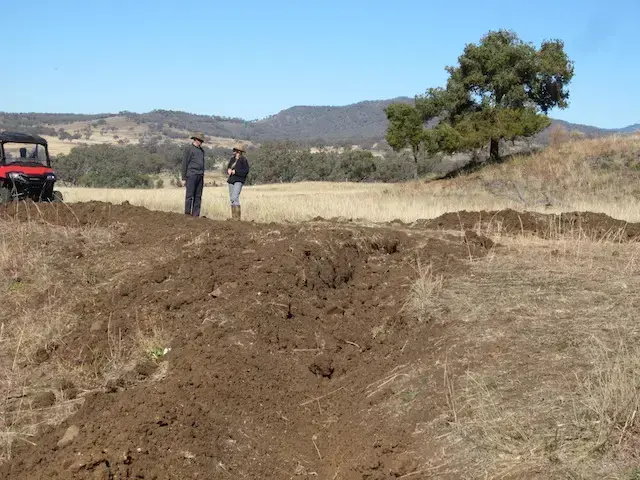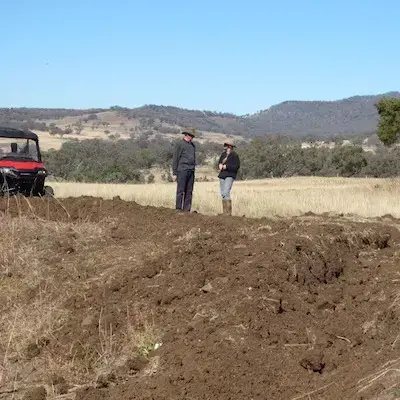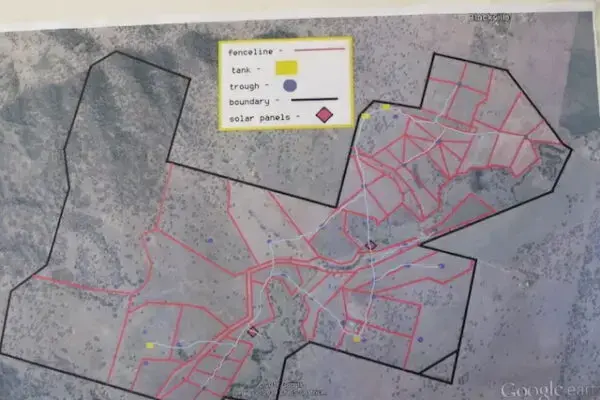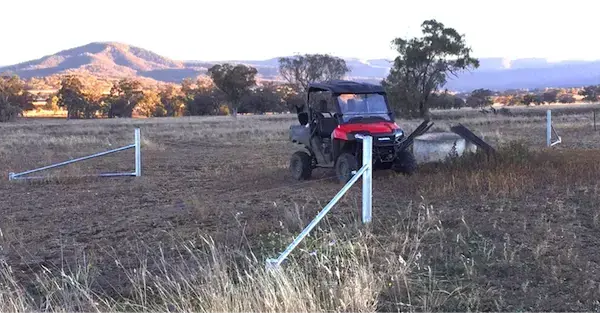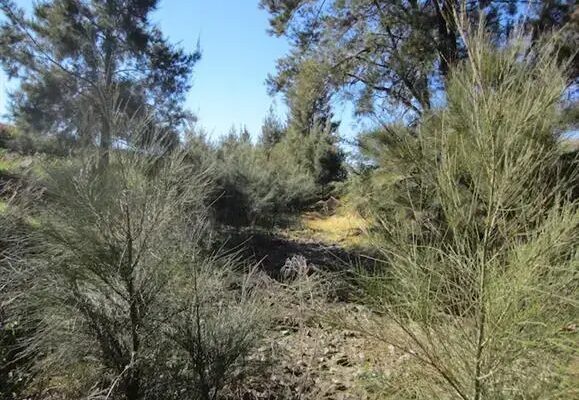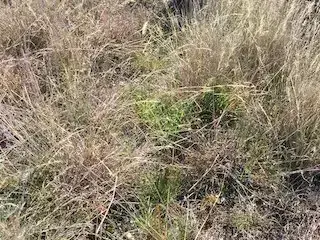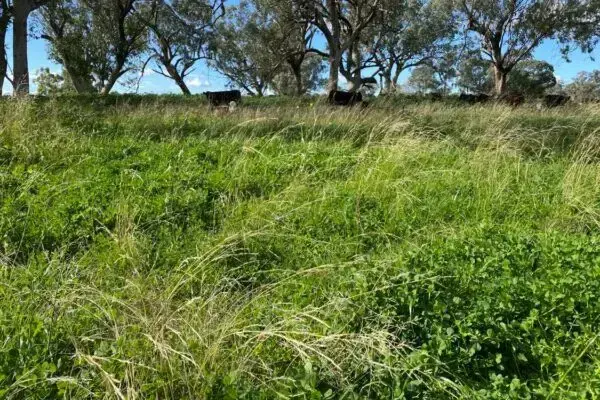‘Rothesay’
The Rothesay transition story
A REGENERATIVE AGRICULTURE CASE STUDY
Maddy Pursehouse grew up in the city, and her love of horses introduced her to agriculture. Years of experience working in diverse farming practice and ongoing training and education followed. Maddy has made changes to their initial Rothesay business model, proving that flexibility, formal and applied education and conversations with mentors are key factors in managing ongoing drought conditions.
Management changes on Rothesay include preserving ground cover using a different stocking model and fencing to allow rehabilitation of creeks and gullies. Maddy shares her experience in managing Rothesay using regenerative farming practices in this transition case study.
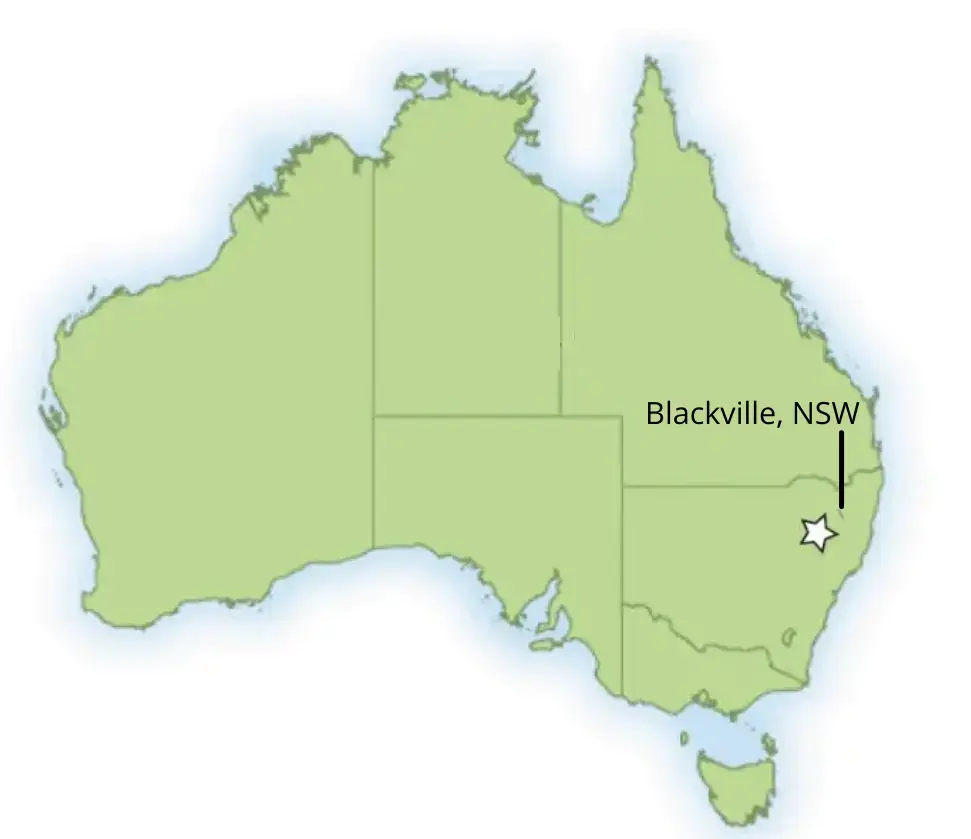
Blackville NSW, 100 km south-west of Tamworth
ENTERPRISE: Angus cattle
PROPERTY SIZE: 1,629 hectares
AVERAGE ANNUAL RAINFALL: 691 mm
ELEVATION: 416m
MOTIVATION FOR CHANGE: Sustainable grazing operation
INNOVATIONS
- Increasing number of paddocks to manage grazing pressure and maintain groundcover
- Controlling grazing pressure in riparian areas
- Drainage control interventions including contour banks
KEY RESULTS
- Generating cashflow during drought due to strategic grazing
- Increased water availability due to increased rainfall infiltration and reduced losses to evaporation
- Improving the resilience of her farm business
Maddy Pursehouse and Malcolm Coleman (her father) purchased Rothesay in 2016. They added the adjoining Springfield block two years later and now the combined Rothesay property comprises 1,629 hectares. While Malcolm visits to help occasionally, Maddy makes all the day-to-day decisions about managing the farm.
Rothesay is located on the foothills and lower slopes of the Liverpool Ranges, in the catchment of the Mooki River. Omaleah Creek and Black Creek run through and join on the property. The creeks only flow intermittently, so water for stock is obtained from bores. The long-term average annual rainfall as recorded at Blackville (2 km south of the farm) is 691 mm, with summer dominant rainfall pattern.
The landscape
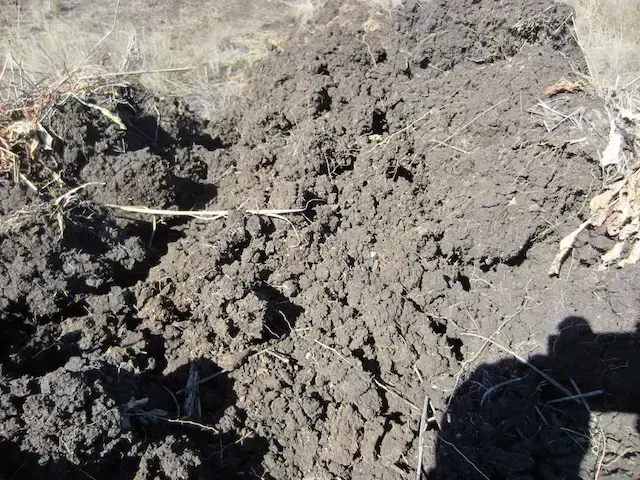
Deep cracking clay soils found on Rothesay
The main soil type is deep cracking clay (vertisols) derived from basalt (figure 3). This soil type is well-structured and intrinsically fertile and can be highly productive given enough water. Maddy arranged soil testing to be done soon after she took over Rothesay. This showed an abundance of phosphorus and magnesium but insufficient nitrogen, sulphur, calcium, zinc and boron. A fertilisation program incorporating a trial to test different mineral and/or biological approaches to addressing the deficiencies was recommended, but it is too soon to tell the results.
Native vegetation on the cracking clay soils of the Liverpool Plains region is mainly native grass with a range of small forb and herb species. The main grasses include Plains Grass (Austrostipa aristiglumis), Queensland Bluegrass (Dichanthium sericeum), Red Grass (Bothriochloa macra) and Wallaby grass (Austrodanthonia sp.). It also contains scattered and patchy shrubs and trees, including Myall (Acacia pendula), Rough-barked Apple (Angophora floribunda), Fuzzy Box (Eucalyptus conica), Bimble Box (E. populnea) and Yellow Box (E. melliodora). Rothesay, which stretches from the plains onto the lower slopes, also hosts Wallaby grass (Austrodanthonia spp.), Red grass (Bothriochloa macra), Lobed Blue Grass (Bothriochloa Biloba), River She-oak (Casuarina cunninghamiana), which proliferates along some reaches of the creeks, Kurrajong (Brachychiton populneus), White Box (E. albens) and Cypress Pine (Callitris spp.).
Water Management
The Blackville Floodplain Management Plan (2003) recognised that land management practices in upstream areas of the Mooki River catchment have increased erosion, and that ‘downstream landholders have not been able to pass on the additional flow or sediment…’.The ‘additional flow’ evidently exacerbated flooding and waterlogging, and became an issue for cropping on the plains. The plan prescribed various ‘solutions’ for the Upper Catchment Zone, in which Rothesay and Springfield are located. These solutions included:
- maintaining 70% ground cover on slopes up to 75% and 80% ground cover on steeper slopes;
- using a stocking strategy to take account of ‘climatic variability’ (i.e., high rainfall periods versus drought)
- avoiding overstocking by using rotational grazing,
- preventing concentration of run-off using ‘appropriate limited’ earthworks to stabilise gully heads, and
- to promote overland flow
These practices seem eminently sensible and desirable. Individual landholders were nominated as being responsible to implement them. To what extent those landholders took up the challenge is unclear, but Maddy is endeavouring to do that today on Rothesay. As such she is initiating a ‘catchment rehydration’ approach to make the most of all the rain that falls and to reduce erosion.
She has made a start in three ways.
- Firstly, by increasing the number of paddocks to 68 (more paddock subdivision is planned) grazing pressure can be managed better to maintain ground cover. Subdividing paddocks can be done more cost-effectively by installing a trough at the intersections, so that one new trough can water up to four paddocks.
- Controlling grazing pressure in riparian areas has allowed River She-oak to regenerate within the creek system. The build-up of vegetation can already be seen to be holding back the intermittent flows that would otherwise be racing downstream, eroding the creek banks and carrying away soil and nutrients. As well as reducing erosion, slowing the flow increases infiltration and groundwater recharge.
- Early in 2019 shallow level contour banks were built running out of a gully. In a flood, the level contour bank picks up water and runs it along the contour until it is dispersed at a ridge where a spill way has been created. The aim is to use the flood water which would have ended up in Omaleah Creek to instead be diverted to rehydrate paddocks on the property.
This contour bank is perhaps the first of many such drainage control interventions. The work was designed and implemented with advice from Peter and Stuart Andrews and regional catchment authorities including Local Land Services and Landcare.
Grazing Management
When Maddy took over Rothesay the business focus was breeding Angus cattle. Based on the good seasonal conditions at the time, she invested in breeding stock. As dry conditions quickly set in, maintaining a breeding herd and trade steers became a challenge.
One cow and calf per four hectares is the expected carrying capacity for the region. While that might be a useful ‘rule of thumb’ over the long term, year-to-year stock management requires a far more nuanced approach to adjust for rainfall variability from year to year. Using the tools of observation and pasture budgeting, Maddy has found the Maia Grazing software pasture management system very useful. She feels it enables a more detailed analysis of grazing stock management than the traditional paper grazing chart. There are many software systems available and can be found, for example at Trethewey (2018).
Rotating livestock through grazing cells allows Maddy to increase the stocking density and animal impact by moving larger mob sizes over short time periods. Her feed budget calculates the time period a mob should stay in any one paddock, calibrating this pasture management system through observation has proven successful.
The objective is to maintain adequate ground cover by moving stock on once fifty percent of the available grass is consumed. This allows plants to recover more quickly, keeps the roots in active growth phase and provides for longer recovery periods.
By March 2017 Maddy had started to destock and over the course of the next year, she sold all her trade steers. As the dry spell progressed, Maddy’s feed budget was telling her that the breeding cattle needed to be sold. Short-term pain for long-term gain. Selling the herd, even at a loss, ensured that the paddocks were not over-grazed and would therefore recover sooner after rain. The cost of hand feeding was avoided and instead of increasing her overdraft on feed bills, she had the money from the sold stock available for re-stocking when the time was right.
By December 2018, there was enough growth in the paddocks to enable Maddy to start trading. She managed to trade cattle from December 2018 to September 2019. With a combination of careful feed budgeting, the use of the forecasting tool in Maia Grazing and KLR Marketing Spreadsheets, skinny cows were purchased to fatten and sell on short trades. Although at significantly reduced numbers, Maddy was still generating cashflow – and this during the worst drought in history!
However, from mid-September 2019, once again Rothesay is completely destocked. Leaving sufficient ground cover has been the key and of particular importance to the farm management. It protects the soil, reduces erosion and improves the micro climate at ground level.
From Maddy’s observations, having plants with roots already established is fundamental to paddock recovery. They are sitting there waiting for the rain and even if there is a small shower, they just start to green up and grow, unlike seeds that must germinate and take time to be established as occurs in bare paddocks.
“I have seen it repeatedly in this dry period where we get a shower, and a seed will germinate, only to die because we don’t get the follow up rain it needs. It has been a continuous trend throughout the last few years”.
Keeping ground cover has been fundamental and the reason Maddy has been able to make trades for the past eight months. An added advantage is that by turning off water to troughs when the cattle have moved on, you remove the attraction for Kangaroos and minimize grazing pressure.
With sound advice and using grazing tools Maddy is turning over cattle every couple of months. She is using both commercially available tools and her own observations to determine how much feed is available at a moment in time and hence how many cattle can be run and for how long. Using marketing tools, she knows the profit margin before purchasing cattle to ensure a profitable trade.
During the current dry period, Maddy makes sure she has enough feed available in the paddocks to finish a trade before cattle are purchased. It is too risky to purchase cattle with the “hope” it is going to rain to grow feed to finish a trade. To take the hope and risk out of her trades, Maddy matches her stocking rate to carrying capacity – in effect the number of mouths to the available grass.
While it is early in the story, indications are that Maddy Pursehouse is showing the way to considerably improve the resilience of her farm business. She is keeping an open mind about grazing strategies and adapting them to seasonal circumstances, and she is keen to learn about new approaches or practices and willingly consults on possible options.



